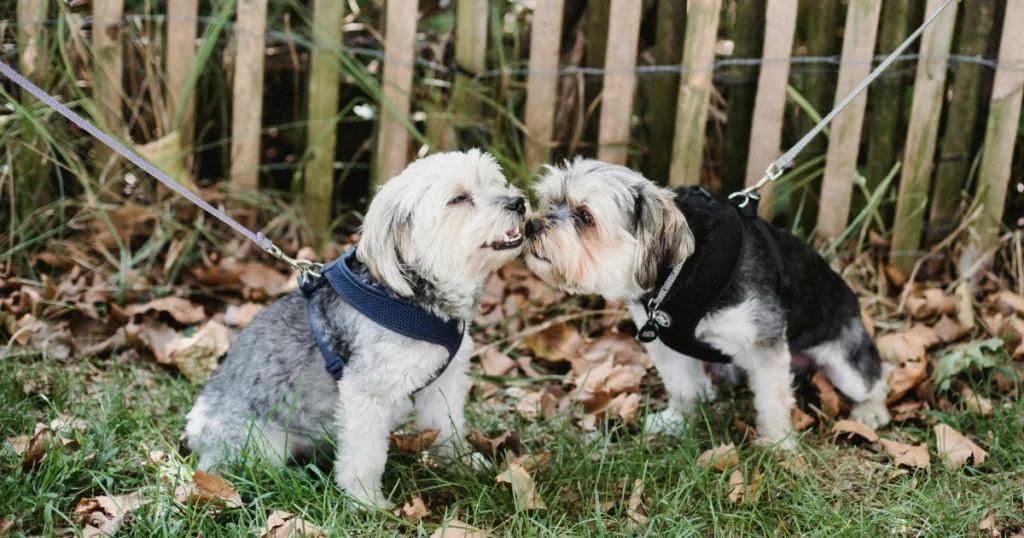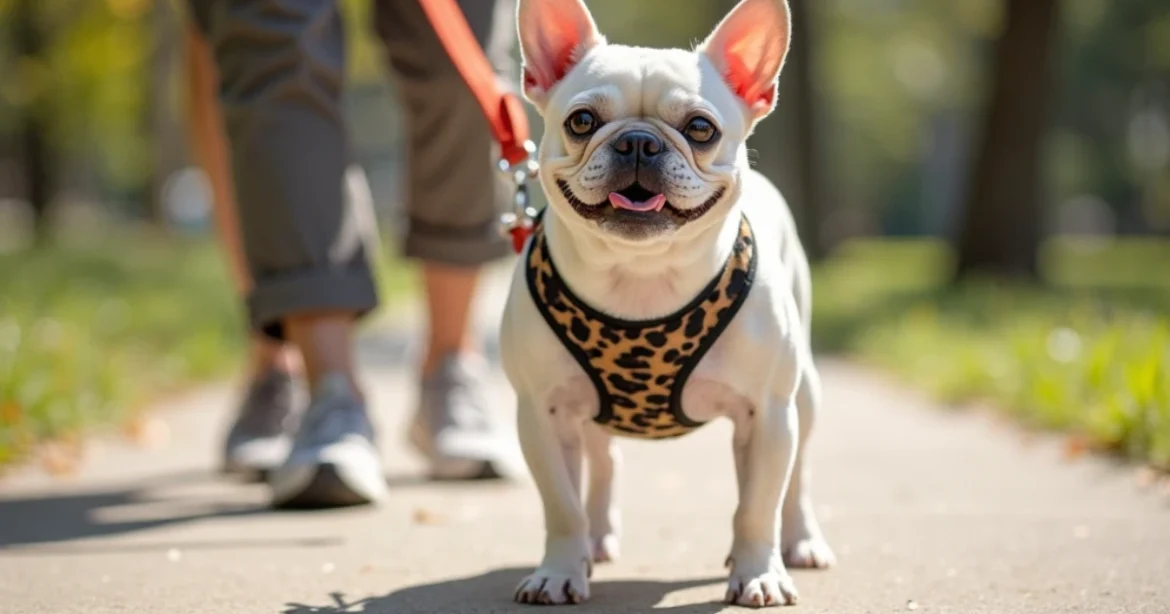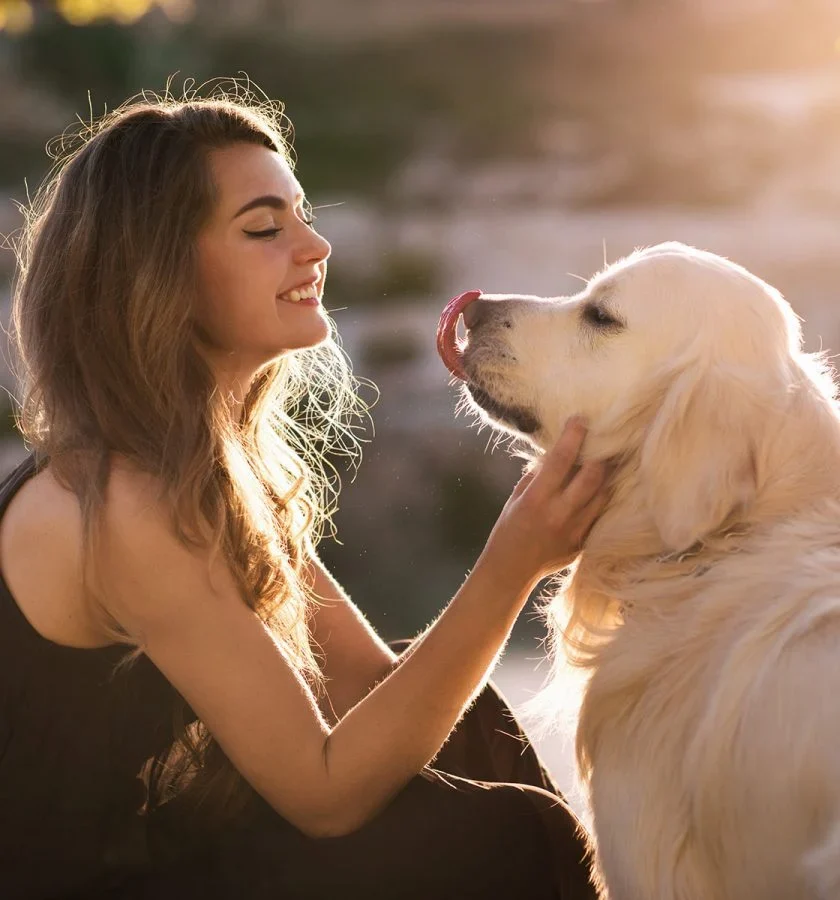Best Step In Dog Harness for Every Walk is the perfect solution if you’re tired of struggling with traditional harnesses. Are harnesses a constant battle in your household? Does your furry friend squirm, panic when something goes over their head, or seem uncomfortable during walks? If you’ve been wrestling with over-the-head harnesses or dealing with a dog who dreads getting ready for walks, you’re not alone. Many pet owners face these challenges, but choosing the best step-in dog harness offers a simple, effective way to transform your walking routine.
Step-in harnesses offer a revolutionary approach to dog walking gear. Instead of the traditional overhead application, your dog simply steps into two loops, and you buckle the harness securely on their back. This innovative design prioritizes ease of use and comfort, making walk preparation a breeze for both you and your canine companion.
This comprehensive guide will walk you through everything you need to know about step-in harnesses, from understanding their benefits to mastering proper fitting techniques. You’ll discover how to use a step-in harness correctly, learn what makes these harnesses special, and get expert advice on choosing the perfect one for your dog. Whether you have a small, anxious dog, a playful puppy, an older dog with mobility concerns, or a flat-faced breed prone to breathing issues, this guide will help you make an informed decision.
What Exactly is a Best Step In Dog Harness for Every Walk ?


A step-in dog harness is an ingeniously simple piece of equipment that eliminates the overhead struggle many dogs experience with traditional harnesses. The concept is straightforward: your dog steps into two loops that form around their front legs, and then you pull the harness up and buckle it securely across their back.
What is a step-in harness that makes it different from other options? The key differentiators set it apart from conventional designs:
• No over-the-head application: Your dog never has to endure having something pulled over their head, which can trigger anxiety or claustrophobia in sensitive dogs
• Minimal neck and throat contact: The design focuses pressure distribution across the chest and shoulders rather than the delicate throat area
• Back-mounted buckle system: Most step-in harnesses feature their primary buckle on the dog’s back, with the D-ring leash attachment also positioned on the back for optimal control
Harness Type Comparison Chart:
| Feature | Step-In Harness | Over-Head Harness | Collar |
|---|---|---|---|
| Application Method | Step through loops | Pull over head | Around neck only |
| Pressure Distribution | Chest & shoulders | Chest & shoulders | Neck only |
| Anxiety Level | Low | Medium-High | Low-Medium |
| Best For | Head-shy dogs, seniors | Active dogs | Well-trained dogs |
| Escape Risk | Low (when fitted) | Very Low | Medium |
Picture this: instead of wrestling with straps and trying to maneuver a harness over your dog’s head while they dodge and weave, you simply place the harness on the ground, guide their paws into the openings, and secure it with a quick buckle. A simple diagram would show the harness laid flat, resembling a figure-eight shape with two distinct openings for the front legs.
Why Choose a best step-in dog harness? The Benefits Unpacked
The popularity of step-in harnesses stems from their numerous practical advantages that address common frustrations experienced by dog owners and their pets.
Ease of Use and Quick Application
• Perfect for squirmy dogs:
No more wrestling matches during harness time
• Ideal for owners with dexterity issues: Arthritis or mobility challenges become manageable
• Faster walk preparation: Streamlined process saves time during busy mornings
• Less stress for everyone: Both dog and owner experience reduced frustration
Enhanced Comfort and Safety
• Even pressure distribution: Force spreads across chest and shoulders, not the neck
• Reduced choking risk: Eliminates dangerous pressure on the throat area
• Prevents tracheal collapse: Especially important for flat-faced breeds and toy dogs
• Minimizes chafing: Proper fit reduces armpit irritation common with other designs
Perfect for Special Needs Dogs
• Anxious or head-shy dogs: Eliminates overhead application stress
• Rescue dogs with trauma: Visible process builds trust and confidence
• Small breeds and puppies: Gentle application respects delicate frames
• Senior dogs: Easier application for dogs with mobility issues
Important Consideration: While step-in harnesses excel in comfort and ease of use, most are not designed as no-pull harnesses. The back-mounted leash attachment point can actually encourage pulling behavior in some dogs, as it doesn’t redirect their forward momentum. If your primary concern is controlling a strong puller, you might need to consider front-clip harnesses or specialized no-pull designs, though many owners find the comfort benefits of step-in harnesses worth addressing pulling through training rather than equipment.
Step-by-Step: How to Put On a Step-In Dog Harness Correctly
Mastering the proper technique for applying a step-in harness ensures both safety and comfort for your dog. How do I use a step-in harness correctly? Follow this detailed process:
Preparation Phase
• Gather small, high-value treats to create positive associations • Ensure your dog is in a calm state—wait for excitement to settle if needed • Inspect the harness for tangles, twisted straps, or damage • Choose a quiet, familiar space for the application
Application Steps
Step 1: Lay the Harness Flat • Place the harness on the floor in front of your dog • Ensure all straps are lying flat and untangled • Position so two distinct leg holes are clearly visible • The buckle should be ready to fasten on the dog’s back
Step 2: Guide Paws Into Position • Gently encourage your dog to step into each loop • Alternatively, carefully lift one paw at a time through the openings • Start with whichever leg your dog seems more comfortable with • Use treats and praise throughout the process
Step 3: Pull Up and Over • Gather the harness straps smoothly • Pull them up and over your dog’s back in one confident motion • Ensure straps lie flat against your dog’s body without twisting • Avoid hesitation, which can increase dog anxiety
Step 4: Buckle Securely • Fasten the buckle(s) on your dog’s back according to design • Listen for the click to confirm secure closure • Test gently to ensure it won’t accidentally release • Double-check all connection points
Step 5: Adjust for Perfect Fit
• Apply the “two-finger rule” under any strap
• You should fit two fingers comfortably but not more
• Too loose = escape risk; too tight = discomfort or breathing restriction
• Make fine adjustments at all available points
Pro Tips for Success
• Use positive reinforcement with praise and treats throughout
• Practice in short, pressure-free sessions when not actually going for walks
• Never force the harness onto a resistant dog
• Build positive associations gradually over multiple sessions
• End each training session on a successful, positive note
Choosing the Right Step-In Harness: A Buyer’s Guide
Selecting the perfect step-in harness requires careful consideration of sizing, materials, and features that match your dog’s specific needs.
Accurate Sizing is Critical
How to Measure Your Dog: • Chest/Girth: Measure the widest part of ribcage, just behind front legs (most important measurement)
• Neck: Some designs require neck measurement at the base where collar sits
• Back Length: Measure from base of neck to base of tail (for specific designs)
• Weight: Always check manufacturer weight recommendations alongside measurements
Sizing Best Practices: • Consult each manufacturer’s specific size chart—sizing varies significantly
• When between sizes, consider your dog’s build and activity level
• Account for seasonal coat changes in double-coated breeds
• Measure your dog while standing in natural position
Material Comparison Guide
Material Performance Chart:
| Material | Durability | Comfort | Breathability | Weather Resistance | Best For |
|---|---|---|---|---|---|
| Nylon Webbing | Excellent | Good | Fair | Excellent | Active dogs, all weather |
| Mesh | Good | Excellent | Excellent | Fair | Hot climates, sensitive skin |
| Neoprene/Padded | Very Good | Excellent | Good | Good | Long wear, comfort priority |
| Fleece-Lined | Fair | Excellent | Poor | Fair | Indoor/short walks, sensitive dogs |
Essential Features Checklist: What to Look for in the Best Step-In Dog Harness



Adjustability Features:
• Multiple adjustment points (chest, sometimes neck)
• Range of adjustment should accommodate growth or weight changes
• Easy-to-reach adjustment points for owners
• Secure adjustment mechanisms that won’t slip
Hardware Quality Indicators:
• Metal D-rings (avoid plastic)
• Quick-release buckles that are sturdy and reliable
• Reinforced stitching at all stress points
• Rust-resistant hardware for outdoor use
Comfort and Safety Features:
• Padding under buckles and at pressure points
• Reflective elements for visibility
• Breathable materials for extended wear
• Escape-proof design elements
Size Selection Quick Reference
Small Dogs (Under 25 lbs):
• Prioritize comfort and gentleness
• Look for lightweight materials
• Ensure easy adjustability for growth
Medium Dogs (25-60 lbs):
• Balance durability with comfort
• Consider activity level in material choice
• Verify weight capacity of hardware
Large Dogs (Over 60 lbs):
• Focus on robust construction
• Thicker webbing and reinforced stitching
• Heavy-duty hardware essential
🐶 Common Questions About Step-In Harnesses
Can step-in harnesses be used for large dogs?
Absolutely — the best step-in dog harness can work well for large dogs, although it’s important to choose a design suited to their size and strength. Step-in harnesses made for bigger breeds usually include:
• Thicker webbing for increased strength
• More robust hardware and reinforcement at stress points
• Higher weight capacity ratings
• However, they may not be ideal for very strong pullers due to back-clip design
Are step-in harnesses escape-proof?
The escape-proof nature depends on several factors:
• Proper fit is crucial: Well-fitted harnesses are quite secure
• Dog’s body shape matters: Dogs with narrow heads (like Greyhounds) may need additional security features
• Quality varies by design: Some include extra chest straps or specialized anti-escape features
• Determined dogs: Some dogs can back out of improperly adjusted harnesses regardless of design
How do I clean my step-in harness?
General Cleaning Steps:
• Hand wash with mild soap and warm water
• Use a soft brush for stubborn dirt or odors
• Rinse thoroughly to remove all soap residue
• Air dry completely before use
• Check manufacturer’s specific care instructions
• Some are machine washable, but air drying is always recommended
My dog hates the harness—what can I do?
Positive Association Training:
• Start by placing the harness near your dog’s food bowl
• Practice the step-in motion without actually putting it on
• Reward each small success with high-value treats
• Keep training sessions short and positive (5-10 minutes)
• End each session on a successful note
• Gradually build up to full application over several days or weeks
When should I replace my dog’s harness?
Replacement Indicators:
• Visible wear and tear in fabric or webbing
• Loose, fraying, or broken stitching
• Broken or malfunctioning buckles
• Stretched straps that no longer provide proper fit
• Hardware showing rust or damage
• Significant changes in your dog’s size
• Any safety concerns about the harness integrity
Conclusion
Step-in harnesses represent a thoughtful evolution in dog walking equipment, prioritizing both comfort and convenience without sacrificing safety or control. The benefits are clear:
Key Takeaways
• Easier application eliminates daily struggles with squirmy or anxious dogs
• Enhanced comfort through proper pressure distribution protects your dog’s health
• Reduced anxiety for head-shy dogs builds positive walking associations
• Improved safety for breeds prone to respiratory issues
• Versatile design works well for dogs of all sizes when properly fitted
Making Your Decision
Whether you’re dealing with a squirmy puppy, an anxious rescue dog, or simply want to make your daily walks more enjoyable, a properly fitted step-in harness can transform your walking experience. Take the time to:
• Measure carefully using our sizing guide
• Choose quality materials and construction that match your needs
• Practice the application technique until both you and your dog are comfortable
Final Thoughts
Remember that the best harness is one that fits properly, suits your dog’s temperament and physical needs, and makes walks enjoyable for both of you. With the right step-in harness and proper fitting, you’ll be ready to hit the trails, sidewalks, or neighborhood paths with confidence and comfort.
Start your step-in harness journey today, and discover how this simple change in equipment can make such a significant difference in your daily walks together.
Frequently Asked Questions (FAQ)
- What is a step-in dog harness?
A harness that your dog steps into with its front legs, avoiding overhead application and reducing anxiety. - Is a step-in harness better than a traditional collar?
Yes, it distributes pressure across the chest instead of the neck, making it safer and more comfortable. - How do I put on a step-in dog harness?
Lay it flat, guide your dog’s paws into the loops, pull it up, and buckle it on the back. - Can step-in harnesses help reduce pulling?
Not directly. For pullers, consider training or a no-pull front-clip harness. - Are step-in harnesses good for small dogs?
Yes, they’re gentle, lightweight, and ideal for delicate frames. - Can puppies use step-in harnesses?
Yes, they’re great for puppies, just make sure the size is adjustable. - How do I know what size to get?
Measure chest girth and refer to the sizing chart. Use the two-finger rule for fit. - How do I clean a step-in harness?
Hand wash with mild soap and warm water, then air dry. Check the label for care instructions. - Is a step-in harness escape-proof?
If properly fitted, yes. For slim dogs or escape artists, look for added security features.




